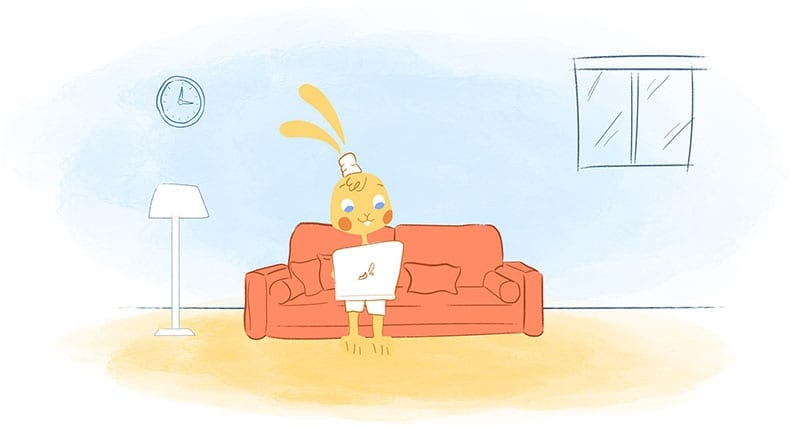

There’s no denying that flexibility in the workplace is all the rage these days. A Deloitte survey found that 94 percent of respondents believed flexible work would benefit them.
Why? Forty-three percent of professionals cite less stress and better mental health as the main benefits of work flexibility. In second place was a better work-life balance. Almost 30 percent of professionals report that flexibility at work would increase their productivity or efficiency at work — as well as their job satisfaction and morale.
Despite this, inflexibility may appear counterintuitive in a world that promotes flexibility. But wouldn’t it be awesome if you could unlock your true potential by saying no, setting boundaries, and prioritizing your values?
Intentional inflexibility does not mean being rigid or stubborn. Instead, it’s about making conscious choices based on what you value most and what is most important to you. By fiercely protecting your time, energy, and attention, you can spend them on what matters most.
You can think of it this way: imagine your life as a beautiful mosaic. The tiles represent commitments, responsibilities, and demands on your time. Adding tiles to a mosaic will make it more intricate and potentially beautiful.
However, you can only fit so many tiles before the whole thing collapses. When we intend to be inflexible, we choose the tiles that create the most meaningful and fulfilling picture, which may mean saying no to others in the process.
In that light, here are some powerful reasons you should embrace intentional inflexibility.
Why Embrace Intentional Inflexibility?
It is possible to shut off unexpected and spontaneous joys of life by being intentionally inflexible. And that’s fair.
On the other hand, meticulous individuals may find this beneficial. In addition, staying committed to your principles and plans can be advantageous in certain situations.
Provides focus and consistency.
- Prioritization. By setting boundaries and saying “no,” you can focus on your core priorities and commitments. This prevents distractions and helps you avoid taking on too much.
- Reduced decision fatigue. You will have to make many choices throughout the day, which can drain your mental energy. Having clear boundaries and routines eliminates the need to make decisions repeatedly, which allows you to focus on more important matters.
- Keeping your long-term goals on track. The key to achieving long-term goals is staying focused, even if temptations or distractions arise. Your inflexibility helps you resist detours and keep your eyes on the prize.
- Establishing routines and habits. To form habits, you must be consistent. When intentionally inflexible about certain behaviors, you create a structured environment that reinforces positive habits.
- Resilience in the face of change. In a constantly changing world, it can be tempting to get caught up in the whirlwind. By being intentionally inflexible, you can weather storms and stay grounded in your values.
- Mastery. Unwavering dedication and commitment are crucial for success in specific domains, such as mastering a skill or achieving a specific goal.
Protects values and boundaries.
- Defending your values. When protecting your values and principles, saying no is sometimes necessary. Your self-respect and integrity will be bolstered if you decline requests that conflict with your core beliefs.
- Establishing healthy boundaries. To maintain healthy relationships and protect your own well-being, it’s important to set clear boundaries. You can enforce boundaries consistently and respectfully by exercising intentional inflexibility.
- Keeping manipulation and exploitation to a minimum. You might be pressured into changing your mind or doing something you’re uncomfortable with in some situations. However, taking an intentional inflexible stance can help you avoid being manipulated or exploited in this way.
- Authenticity and integrity. Authenticity and integrity are exuded when you stand by what matters most. Regardless of whether they agree with them, people respect those who know who they are and what they believe in.
- Increased effectiveness. You become more effective and efficient when you focus on the things that truly matter. As you focus on reaching your goals, you avoid distractions.
Finding Your Intentional Inflexibility
So, how do you identify your areas of intentional inflexibility? Here are a few steps to follow:
- Reflect on your core values. Which principles guide your life and decisions? What is most important to you? Make a note of them and revisit them regularly.
- Define your long-term goals. Where do you want to be in 5, 10, or 20 years? What are your dreams and aspirations? Identifying your values helps you stay true to your vision.
- Consider your boundaries. Where do you draw the line? Are there any things you won’t tolerate? You must set healthy boundaries to protect your well-being, reach your goals, and maintain your integrity.
- Seek feedback. Get in touch with friends, mentors, and advisors you trust. What do they think are your core strengths and values? It is possible for their insights to help you gain a stronger sense of self.
Putting Intentional Inflexibility into Practice
It’s important to remember that intentional inflexibility isn’t about being rigid or unyielding. Instead, it’s all about choosing your battles wisely.
Here are a few ways you can apply it.
Have a clear structure for your day.
Develop a solid and consistent routine for your mornings and evenings. With this clear framework, your day will run smoother, regardless of your busy schedule. As a bonus, you’ll have more time for yourself, relationships, and priorities.
At the same time, a clear structure does not have to be rigid or prevent you from doing things on a whim. But, it does give you the opportunity to manage your day in a flexible way while carving out time for the things that matter most to you.
Decide what you want to accomplish.
By getting clear on your future measurable goals, you can increase your intentionality. The reason? Taking action becomes easier when you understand the importance of achieving the results you want.
Further, when your vision is aligned with measurable goals, you are more likely to take action and be motivated. Setting powerful goals can make you more intentional. If you want to understand the importance of your goals, picture yourself having achieved them.
Also, if you feel emotionally invested in your bigger purpose and goals, you will take action with intention. When you see your life after achieving your goals, you feel empowered and motivated every day.
Guard your most productive hours of the day.
To maximize your output and avoid burnout, you must protect your most productive hours. To achieve that, follow these strategies:
Identify your peak productivity times.
- Track your energy levels. Observe when you feel most alert, motivated, and focused. In general, people are most productive between 8 AM and 2 PM. It may, however, vary from person to person. Early birds are most productive between 8 AM and 12 PM, and night owls between 6 PM and 9 PM, for example.
- Experiment with different schedules. Try different ones for a few weeks to find out which one allows you to achieve the most during your peak hours.
- Analyze your past performance. Analyze your past achievements and determine what time of day they occurred. By identifying patterns, you may be able to predict future productivity.
Schedule your most important tasks for your peak hours.
- Block out time in your calendar. Reserve your most productive hours for deep work, which requires focused concentration. Do not schedule meetings or take phone calls during this time.
- Prioritize your tasks. When you are at your peak, focus on the most important tasks.
- Minimize multitasking. Focus on one task at a time to avoid wasting time and energy switching between tasks.
Minimize distractions during your peak hours.
- Turn off notifications. Silence your phone, email, and other apps that can interrupt your focus.
- Find a quiet workspace. Work there without interruptions from coworkers, family, or others.
- Use productivity tools. Distracting websites and social media can be blocked using apps or software.
Communicate your boundaries.
- Let colleagues and clients know your peak hours. Explain that you cannot take meetings or calls during those hours. This will prevent misunderstandings and ensure everyone is on the same page.
- Set realistic expectations. Even during your peak hours, don’t overload your schedule. Don’t forget to take a break and rest your mind.
- Learn to say no. You shouldn’t feel pressured to accept requests interfering with your most productive time. What’s more, don’t be afraid to decline if a request does not align with your values or goals.
Rather than responding to everything in your inbox as it comes in, avoid using it as a to-do list.
To sort the important tasks from the non-urgent ones on your to-do list, use the Eisenhower Matrix (also known as the urgent-important matrix).
If something urgent needs to be taken care of immediately, you can either come to them or they can call you.
Question the necessity of meetings.
Among productivity killers, meetings top the list. Therefore, it’s always wise to question the necessity of a meeting. For instance, could we have a phone call or a Slack thread instead?
Also, politely ask who should attend the meeting. Are six attendees really necessary when three would do? Does the meeting have to be an hour, or would 30 minutes suffice?
If you must attend, bring an agenda, agree with your colleagues to prepare ideas in advance, and shorten small talk.
Offer alternatives.
Rather than saying no completely — see if you can offer an alternative that respects your bounds while offering a way to compromise. For example, you cannot make it to next Tuesday’s meeting. However, sharing your calendar with the other invitees may help you find a more convenient date later in the month.
Focus on progress, not perfection.
Within your chosen framework, strive for continuous improvement. Even within boundaries, growth is possible.
Be willing to walk away.
Be courageous enough to walk away from a situation that requires you to compromise your core values. The importance of protecting your integrity cannot be overstated.
Final Words of Advice
It is important to maintain an unwavering core and be flexible in other areas. Within your boundaries, learn, adapt, and grow. Imagine yourself as a forest, with each tree representing a core value but the entire ecosystem flourishing on diversity and adaptability.
Intentional inflexibility doesn’t mean being rigid; it means standing by what matters most. When faced with constant change, choosing your non-negotiables can provide clarity, strength, and authenticity. Don’t be afraid to bend with the wind, but remember that sometimes the strongest roots last the longest.
FAQs
What is intentional inflexibility?
There are a few different interpretations of “intentional inflexibility.” Here, however, we mean adhering to rules or principles.
You might limit yourself to checking your email once or twice daily, for instance. This method is most often used by people who are meticulous about planning and want to achieve their goals.
Why would someone choose to be intentionally inflexible?
A person might choose to be intentionally inflexible for several reasons:
- Preventing decision fatigue. Being intentionally inflexible can reduce the number of decisions that must be made, which can be mentally draining.
- To remain focused, maintaining a plan or goal can help you avoid distractions and stay on track by keeping you inflexible.
- Upholding important values. It may be necessary to be inflexible in some cases in order to protect important values or principles.
- Gaining a competitive advantage. Intentional inflexibility can be seen as a strategy to maintain a strategic edge.
Are there any downsides to intentional inflexibility?
Yes, intentional inflexibility does have some downsides, such as:
- It can result in missed opportunities. Inflexible people may miss out on new experiences, relationships, and information.
- Relationships can be damaged by it. It can be difficult to compromise or cooperate with others if inflexible.
- Poor decision-making can result from it. When people are inflexible, they may be unable to make rational decisions using all available information.
How can I know if I am being too inflexible?
Listed below are some signs that you may be being too rigid:
- It is difficult for you to consider other people’s viewpoints.
- In spite of evidence that change is necessary, you are resistant to it.
- It’s hard for you to compromise.
- You may feel frustrated or angry when things don’t go your way.
If you recognize any of these signs, you may benefit from being more flexible. In order to do this, you do not have to give up your values or principles, but you do have to be open to new information and experiences.
Image Credit: cottonbro studio; Pexels











John Rampton
John’s goal in life is to make people’s lives much more productive. Upping productivity allows us to spend more time doing the things we enjoy most. John was recently recognized by Entrepreneur Magazine as being one of the top marketers in the World. John is co-founder and CEO of Calendar.